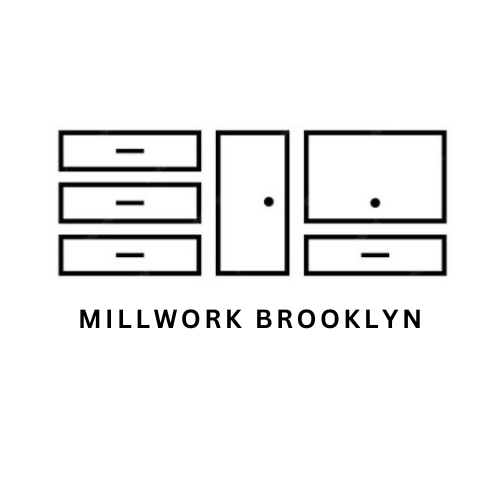When people think about custom millwork, the first thing that comes to mind is the final product—elegant built-ins, flawless kitchen cabinetry, or crown molding that looks like it’s been there for a hundred years. But what really brings that millwork to life is the material underneath it all: the wood.
Choosing the right wood is one of the most important decisions you’ll make in your renovation or design journey. And if you live in a Brooklyn brownstone, a pre-war apartment, or one of the borough’s sleek new builds, the kind of wood you choose has to match not only your aesthetic, but also your space, your values, and your lifestyle.
So, let’s talk about the unsung hero behind every great millwork project. In this post, I’ll Walk you through the best wood for millwork in Brooklyn homes—what makes each species special, how it fits into different design styles, and what to consider if you care about sustainable woodwork in Brooklyn.
Why the Wood You Choose Matters
Wood isn’t just a building block—it’s a statement. It’s the texture you run your hand across every day, the warmth that fills your space, the grain pattern that tells its own quiet story.
In custom millwork, wood affects:
- Durability: Some woods hold up better over time, resisting dents, swelling, or humidity issues (which matter a lot in older Brooklyn homes).
- Appearance: Every species has a different grain, tone, and texture. Some take paint better, some stain beautifully, and some are stunning just as they are.
- Sustainability: If eco-conscious design is important to you, the source and harvesting method of your wood choice makes a big difference.
- Cost: Certain hardwoods are premium for a reason. Others offer a great balance of beauty and budget.
There’s no one-size-fits-all answer. But there is a best wood for your project—and we’ll help you find it.
The All-Stars: Woods We Love for Brooklyn Millwork
Let’s meet the real MVPs of custom millwork—the species that show up again and again in our Brooklyn projects because they offer the perfect combo of beauty, function, and lasting value.
1. White Oak – The Timeless Trendsetter
White oak has had a major glow-up in recent years, and for good reason. Its soft, creamy tones and subtle grain patterns make it incredibly versatile. You’ll see it in both modern and traditional designs—everywhere from minimalist kitchen cabinets to elaborate custom staircases.
Why we love it:
- It’s tough and rot-resistant
- Takes stain beautifully (or looks great raw with a clear finish)
- Works well in moisture-prone areas like kitchens and bathrooms
- Pairs easily with both light and dark finishes
In brownstones, we often use white oak when clients want a fresh take on classic Brooklyn home finishes. It bridges old and new beautifully.
2. Walnut – Rich, Warm, and Full of Character
If you want your millwork to feel like a piece of art, walnut is a go-to. Known for its deep brown hues and swirling grain, it instantly elevates a room. We’ve used it for statement kitchen islands, floating vanities, and even entire home libraries.
Why it stands out:
- Naturally dark and elegant (no heavy staining needed)
- Strong and long-lasting
- Develops a rich patina over time
It’s on the pricier side, but it’s an investment that pays off in beauty and timeless appeal.
3. Maple – The Clean Slate
Maple is a solid, reliable choice that we love for painted millwork or modern applications. It’s dense and smooth, making it ideal for clean lines and crisp finishes.
Where maple shines:
- Custom kitchen cabinets with painted finishes
- Trim, moldings, and contemporary built-ins
- Projects where budget matters but you still want quality
It’s also more sustainable than some hardwoods, making it a popular choice for sustainable woodwork in Brooklyn.
4. Mahogany – The Old-School Classic
For historic homes and high-end detailing, mahogany is hard to beat. Deep in color and extremely durable, it’s a favorite for doors, window casings, and more ornate millwork.
It’s ideal when:
- You’re restoring original architectural features
- You want a touch of old-world sophistication
- You’re working on a luxury brownstone renovation
That said, sourcing mahogany responsibly is key. We only work with suppliers who use certified sustainable methods, so your project looks amazing and aligns with your values.
5. Rift-Cut and Quarter-Sawn Wood – Grain With Personality
Okay, these aren’t types of wood per se—they’re cuts. But they matter, especially if you want that extra level of detail.
- Rift-cut white oak gives you a linear, uniform grain, perfect for modern, minimalist styles.
- Quarter-sawn oak or maple brings out beautiful rays and flecks in the grain, which feel more traditional or craftsman-inspired.
These cuts add character without overpowering your space. They’re more expensive than plain-sawn lumber but are often worth it for the look and stability they offer.
Let’s Talk Sustainability
If you care about the environment—and most of our Brooklyn clients do—you’ll be happy to know that you can have beautiful, lasting millwork and make eco-conscious choices.
Here’s how we approach woodwork in Brooklyn:
- Certified sourcing: We use wood from FSC-certified forests, which ensures responsible harvesting practices.
- Local and domestic species: Using regional woods like maple and oak cuts down on transport emissions and supports U.S. forestry.
- Reclaimed wood options: For those who love the idea of giving old wood a new life, we can source reclaimed materials with amazing patina and history.
- Low-VOC finishes: We use environmentally safe stains and sealants whenever possible to keep your indoor air quality clean.
Sustainability isn’t just a checkbox—it’s part of how we design smarter, more thoughtful homes.
Matching Wood to Your Brooklyn Home
Choosing the right wood is about more than just looks—it’s about harmony. Here’s how we typically match materials to Brooklyn homes:
- Brownstones with original details: We lean into rich tones like walnut or mahogany to echo the home’s history, or use painted maple to restore moldings and trims.
- Modern lofts or townhomes: Rift-cut white oak or light-finished maple helps create clean lines and an airy vibe.
- Eclectic spaces: Mixing wood species (like walnut cabinetry with white oak floors) creates visual interest without clashing.
Don’t worry if you’re unsure what direction to take—we’ll bring samples, talk through the options, and find the right wood that fits both your home and your personality.
What to Watch Out For
A quick word of caution: not all wood is created equal. In our years of experience designing Brooklyn home finishes, we’ve seen our share of mistakes made with poor-quality or ill-suited materials.
Things to keep in mind:
- Avoid cheap imports or veneer-over-particleboard cabinets—they may look nice at first but won’t stand the test of time.
- Match wood species carefully—especially if you’re trying to blend new millwork with existing elements.
- Don’t rush the finish—how wood is sealed, stained, or painted dramatically impacts its look and longevity.
When in doubt, ask questions. That’s what we’re here for.
The Final Word: Your Wood, Your Story
Millwork isn’t just about filling a space—it’s about enhancing it. And the wood you choose is what gives that millwork its soul. Whether you’re aiming for bold and modern, warm and rustic, or something that looks like it’s always belonged in your 1890s brownstone, the right material makes all the difference.
Choosing the best wood for millwork means thinking through how you live, what you love, and how you want your home to feel—not just today, but ten years from now.
If you’re ready to explore your options, get in touch. We’ll bring real samples, real advice, and real excitement about helping you build something one-of-a-kind.
Because in Brooklyn, woodwork isn’t just a detail—it’s a design language. Let’s help you speak it fluently.

